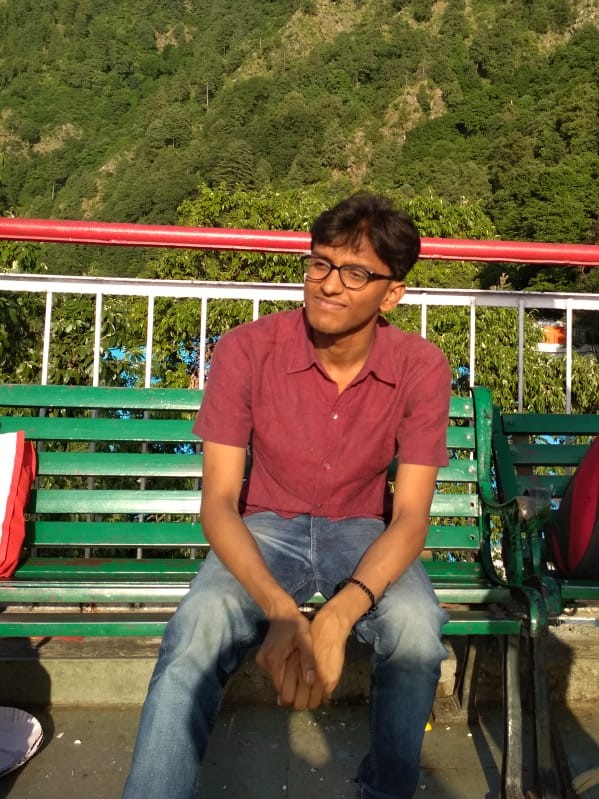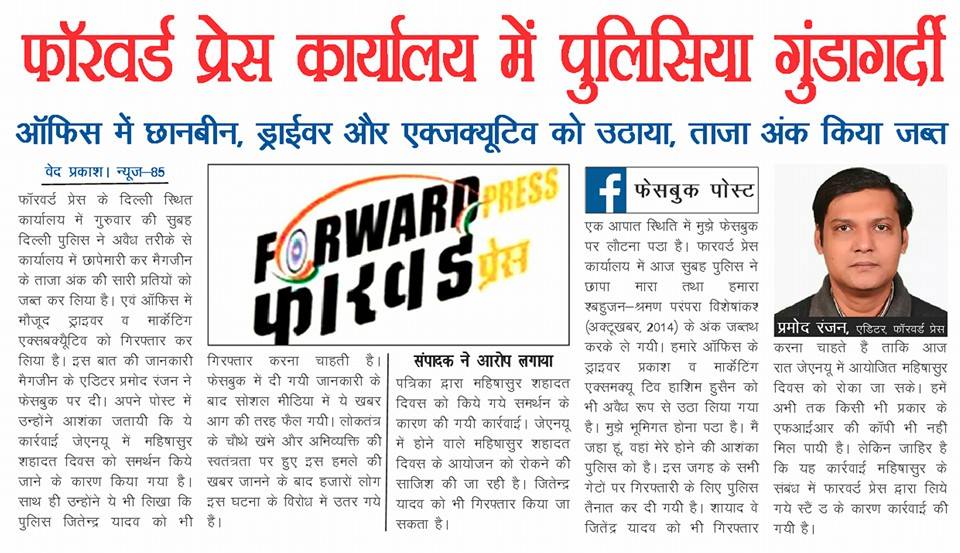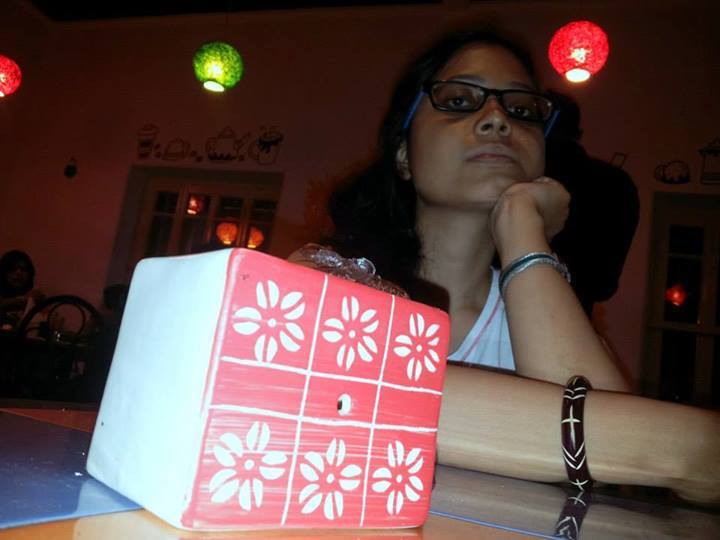Hemangi Kadlak
 This is a transcript of speech given at Bangalore.
This is a transcript of speech given at Bangalore.
Today, I am going to talk about ‘Women in Phule-Ambedkarite ideology and its relevance to contemporary India’, from Buddha to Babasaheb and after. As male and female are biologically different and they are complementary to each other, both are very important for reproducing and sustaining society. When a male or a female child is born they are equal in their physical dependence, capacities, needs, life cycle, movements, etc., but gender makes them different from each other. Gender is a sociological term, to which socio-cultural factors are attached. The process of socialisation for the female and male child differs in many ways. The most apparent form of difference is seen in the allotment of work, dressing style and expected behaviours. In this paper I will first talk about the times in our history where women were perceived and treated as capable and equal partners. I shall later talk about the position of women in contemporary society..
Buddha allowed women to enter into the Sangha and they could attain enlightenment by their own capabilities and potential. An example is Gargi, a bhikuni who attained Arhanthood in her lifetime. Buddha saw a woman as a human being first, without any attachment to the notion of gender. Buddha saw a woman as a capable, equal, complementary natural counterpart to the male.
Samrat Ashok sent his daughter Sanghamitra and his son Mahendra to Srilanka to spread Buddhism. He saw them as capable, equal and separate individuals. He considered both his children as equal and complementary to each other despite their biological differences.
There was Jijau and Shivaji Maharaj. Jijau was Shivaji’s mother, but more than that she was a guru (teacher) to him. She inspired him by her interactions with him and through her teachings to think like a King and hence from his childhood he aspired to be a leader. She introduced him to the idea of ‘Swaraj’ while he was still a child. His success as a king can be largely attributed to Jijau.
Jyotiba Phule and Savitri Mai Phule were an ideal couple in many ways. They had mutual understanding, shared goals, and had common thinking and complementary work styles. We see them as two different, capable, potential individuals irrespective of their biological differences. They both fought for women’s rights such as education for women, child marriage problem, and widow remarriage. Savitri Mai was the first Indian woman teacher.
Birsa Munda fought for women’s dignity and self-respect. He specifically fought for the rights of tribal women in Jharkhand. During his time tribal women were not allowed to wear blouses and he fought for it.
Periyar, the social reformer, introduced the concept of ‘self-respect marriages’ which allowed women to give up some of the traditional customs like wearing a mangalsutra at the time of marriage or choosing how to dress themselves. He also supported the participation of women in the military.
Dr. Babasaheb Ambedkar fought for women’s rights, security, dignity and self-respect and his efforts resulted in the Hindu Code bill which among other things, for the first time, gave women equal rights over their parents’ property. He believed that the relationship between husband and wife should be one of closest friends.
In our society we mostly come across two categories of people. Those who don’t believe that women are and can be capable and equal partners and those purport to follow this belief but are unable to put it in practice. So what we face today in society is that women are not considered equal and capable partners even though you and I believe in that idea. We have instances in our history, as I mentioned earlier, where our forefathers were pro-women or saw women as capable, full of potential, and equal individuals when compared to their male counterparts. But in parallel we also see discriminations, atrocities committed against women. What are we to do? I put this question out to you. I feel we need to talk on these issues seriously in such conferences. We need to chalk out our agendas, plans, strategies as to how we can contribute towards propagating this ideology and minimising discrimination and atrocities on women. I feel that we must have a two-fold plan. We have to empower women, make them stronger educationally, financially, mentally, emotionally, educate them about their rights, teach them to oppose discrimination, and to fight against atrocities committed on them. At the same time we need to work to change the mindset of people, to make them more receptive, accommodative, accepting women in a different light than they have seen thus far so that women may feel secure in this new role. For the latter, we have to educate, sensitize both men and women in our society. We have to slowly but surely work towards eliminating the gender gap.
Unfortunately, gender is not the only factor responsible for women being victimised by society, facing atrocities, being discriminated against. Women are victimized in issues of caste, class, region and religion. History says that illiteracy, less education, child marriage placed restrictions on women; these problems were also there among upper varnas but upper varnas have now improved their position in these issues. But data on pre-birth sex determination, female sex abortion shows these issues to be more prevalent in upper class, educated and in urban regions. If you see the present scenario in the upper varnas, that is Brahmin women, they are on the top and in a dominant position in most of the working places compared to other castes and varnas. This is because they got the cultural capital from their past generations. But if you see history carefully these women were not allowed to study or did not have the same rights as their men did. Then how did this happen? Because of social reform movements from lower varnas/castes the women from the upper varnas got benefited.
Irrespective of that, together we have to work on the implementation part. If we want to transform our society we will have to change the culture of our society. If we take our forefathers example they first tried to change the existing mind-set, rules, regulations, beliefs, by believing that people are equal irrespective of caste, class, religion, region and gender. We need to transform the existing established institutions of the society that are carriers of patriarchy like family and marriage institutions. These are very important institutions which carry patriarchy from generation to generation and surprising thing is that nobody questions them. Nowadays inter-caste or inter-religion marriages are more common but the position of women in these marriages has not changed, irrespective of their education, class, caste, and region. In a typical family, where there is a husband, wife, and their children, if we ask who is the head of the family the answer is almost always – the husband.
After marriage a woman goes to her husband’s house. I consider this act a displacement of the woman. People who are displaced cannot really do what they are capable of doing. It takes time for them to resettle in the new environment and reestablish themselves in all aspects–environmentally, financially, mentally, and emotionally. Women have to go through this process and the feeling of detachment from the family for herself and from her parental home. In fact a woman is called “paraya dhan”. This system displaces her from her own parents’ house where she can live freely with her close ones. Furthermore she has to change her surname. Her children carry their father’s name and title. Such established institutions are strategically designed to limit the progress of the woman and make the man superior to the woman or to keep the woman and her next generation under the man’s control whether she is educated, earning good salary, any caste, class or region. This is a sign of maintaining patriarchy. As she is considered “paraya dhan”, even if she gets education or earns good salary she still has less standing in her own family because she doesn’t carry their family name. We will have to change this status quo and it is in our hands. We can show the changes when we can distinguish ourselves from the existing norms. Admittedly, cultural change is very difficult to see as it is a very slow process and we have to start now – with ourselves.
If we look at our current political platform – from Sonia Gandhi, Mayawati, Mamata Banerjee, Sheila Dixit, to Jayalalithaa – all these women held top political posts in our country and the interesting fact is that they are all either single, widowed or unmarried women. However, men in similar positions are almost all men with families. What should we infer from this? Is it that for women to pursue higher, focused careers they have to be either unmarried, separated from their husbands, or widowed? That is definitely not what we want for our future generation of women to believe. We need to change this scenario. Our goal is to sensitise both men and women to see women as equal, capable, partners in our society. Thank you.
I have lot more things to say but because of limited time I could touch upon those issues which I felt have always been neglected but we see this picture in the society irrespective of class, caste, and region.
~~~
Hemangi Kadlak works as Assistant Professor at Amity University, Mumbai. She is the founder member of InfinIdea Foundation and an active member of the Phule-Ambedkarite movement.










